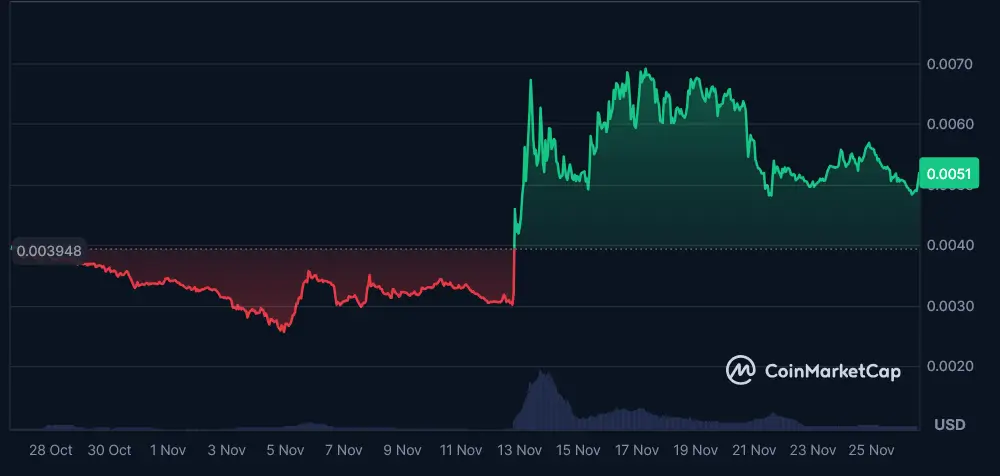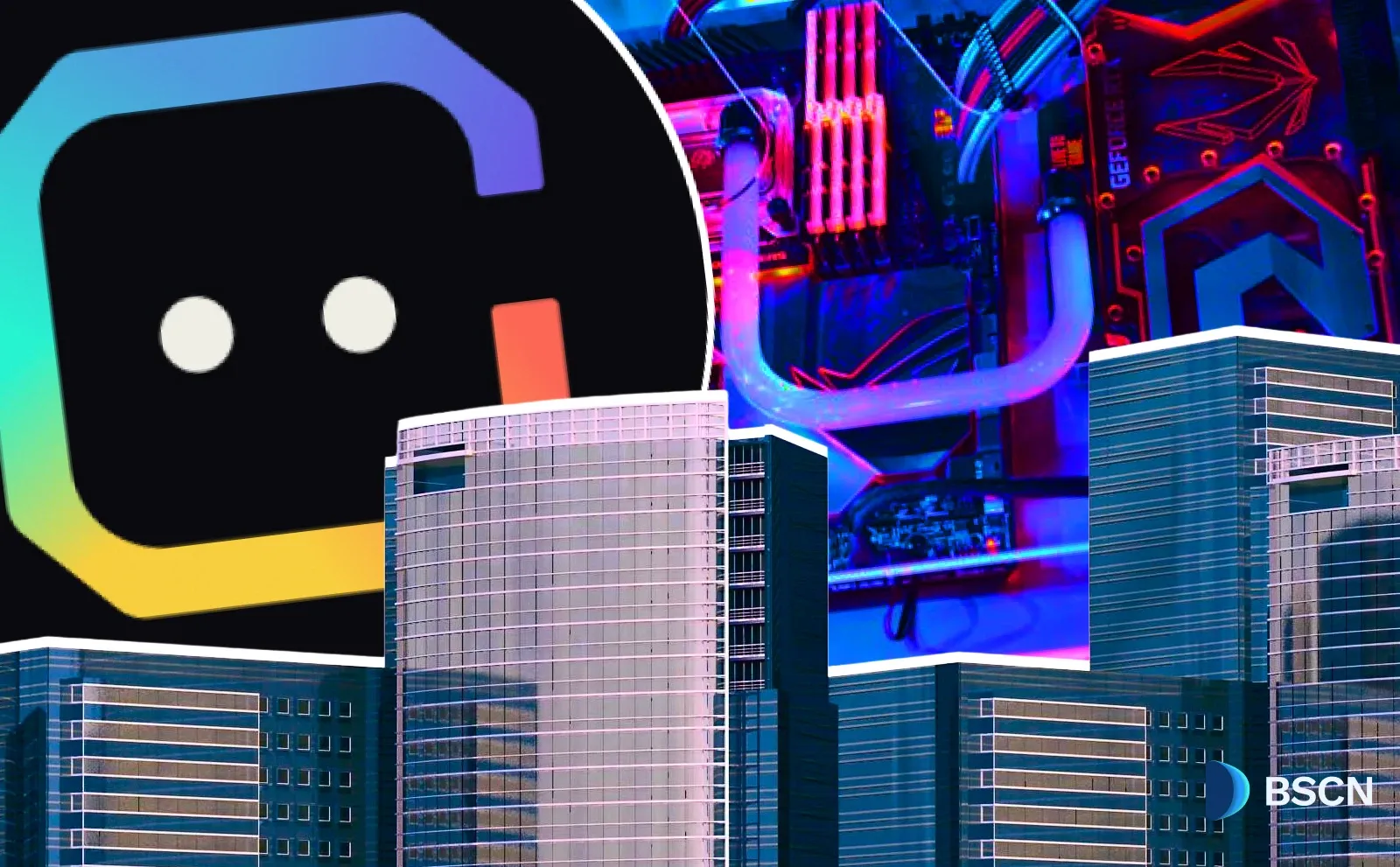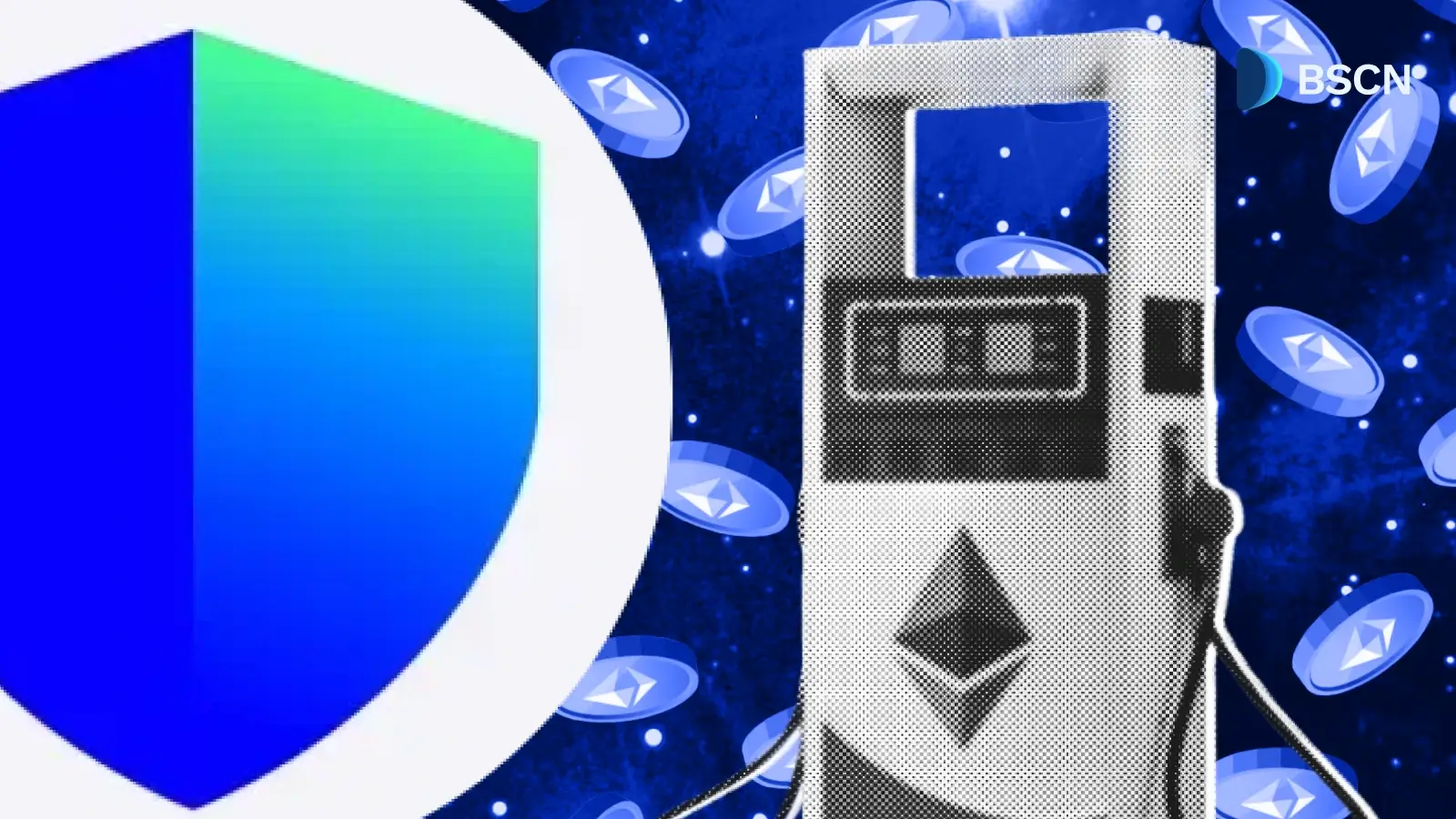Deepdive
(Advertisement)
Telcoin (TEL) Token Deep Dive: Bridging Telecom and DeFi

Telcoin (TEL) token analysis for 2025: tokenomics, utility, market performance, and regulatory milestones, including the first US digital asset bank approval.
Crypto Rich
November 26, 2025
(Advertisement)
Table of Contents
Telcoin (TEL) is an ERC-20 token powering a platform that connects mobile telecommunications with decentralized finance. In mid-November 2025, the token surged 95% after Telcoin received approval to operate the first regulated digital asset bank in the United States under Nebraska's Financial Innovation Act.
The approval was more than a price catalyst. It represents years of infrastructure work aimed at delivering low-cost financial services through mobile networks. Few crypto projects hold banking licenses, telecom partnerships, and DeFi infrastructure simultaneously. Telcoin now has all three.
This analysis covers TEL's tokenomics, utility, market performance, and the regulatory progress positioning it where traditional finance meets blockchain.
What Is the Telcoin Project?
Founded in 2017 by CEO Paul Neuner, Telcoin set out to build what it calls the "Internet of Money." The platform integrates telecommunications, digital banking, and decentralized finance to bring accessible financial services to mobile users worldwide. It achieves this through partnerships with mobile network operators (MNOs) under the GSMA framework.
The ecosystem has several moving parts. The Telcoin Wallet app lets users hold stablecoins, swap tokens on Polygon, and send cross-border payments. The wallet already supports 11 digital cash currencies on Polygon, including eAUD, eGBP, eJPY, eSGD, and eZAR. Governance sits with the Telcoin Association, a Swiss non-profit overseeing protocol decisions.
Regulatory licensing has been central to Telcoin's approach. The project holds licenses in Singapore, Lithuania, the United States, Canada, and Australia. The November 2025 Nebraska approval stands as its most significant milestone. The charter is the first in the US to explicitly authorize connecting customers to DeFi protocols under a regulated framework. Bank-issued stablecoin eUSD is expected to launch soon, with eEUR announced for EU markets under MiCA compliance but not yet live.
What Is Telcoin Network?
Telcoin Network is the project's own blockchain, currently in development. It's an EVM-compatible, public chain secured by GSMA Operator Member mobile network operators using Proof-of-Stake consensus.
The network design puts telecoms at the center. Only GSMA Full Member MNOs can run transaction nodes and earn network fees. This creates a validator set tied to established telecom infrastructure rather than anonymous node operators. Validators receive TEL issuance as rewards for securing the network and maintaining efficient operations.
Development has progressed through several phases. Once fully live, telecoms and their mobile money subsidiaries can launch customized financial applications tailored to local markets. The network also bridges with existing mobile financial services ecosystems and other blockchains.
Why Does a Telecom-Secured Chain Matter?
Most blockchains rely on anonymous validators or mining pools. Telcoin Network takes a different route by anchoring validation to licensed telecoms with existing compliance infrastructure, global reach, and billions of existing customer relationships. This design aims to solve two problems at once: regulatory acceptance and distribution scale.
How Does TEL Accrue Value on the New Chain?
For TEL holders, the network transition changes the token's economic role. On Ethereum, TEL is one of thousands of ERC-20 tokens. On Telcoin Network, it becomes the native asset powering all transactions.
- Gas demand: Every transaction requires TEL for fees, creating persistent buy pressure as network activity grows.
- Staking locks: Validators and delegators must stake TEL to participate, reducing circulating supply.
- Validator rewards: TEL issuance flows to MNOs securing the network, aligning telecom incentives with token value.
Whether fee burns or MEV capture mechanisms are planned has not been confirmed. Monitor official channels for updates on deflationary features.
How Do TEL Tokenomics Work?
$TEL launched via an initial coin offering in 2017 as an ERC-20 token on Ethereum. It has since expanded to Polygon, Arbitrum, and Base. The token serves as the native asset of the Telcoin Platform, with the Telcoin Association handling governance.
Key Token Metrics
- Total supply: 100 billion TEL (hard cap, no additional minting planned)
- Max supply: 100 billion TEL (matches total supply)
- Circulating supply: 91-95 billion TEL (91-95% of total)
- Holder count: Approximately 97,700 wallet addresses
- Inflation rate: Zero (no new tokens minted)
- Burn mechanisms: None confirmed for 2025
Supply Distribution
The 4% gap in circulating supply figures between CoinMarketCap and CoinGecko likely stems from differences in how real-time updates are handled or in how vesting schedules are counted.
High circulation means strong liquidity, but it also raises questions about dilution from remaining unlocked tokens. The original ICO included team vesting provisions, though recent focus has shifted toward decentralized governance. No explicit burn schedules have been announced.
Inflation and Deflation Dynamics
With no new tokens being minted, TEL has zero inflation. All scarcity comes from the fixed 100 billion cap. Deflationary pressure could emerge through transaction fee burns or staking locks once Telcoin Network launches, but those mechanisms depend on future protocol decisions.
The fully diluted valuation currently ranges from $487.4 million to $501.2 million, based on the price multiplied by the maximum supply.
What Are TEL's Utility and Use Cases?
TEL does more than trade on exchanges. The token plays several active roles across the Telcoin ecosystem.
- Network Operations: TEL will serve as the gas token for the upcoming Telcoin Network. It also functions as a reserve asset and powers staking, liquidity provision, and validator rewards.
- DeFi Integration: Users stake TEL to earn yields and provide liquidity to pools. The token connects to the platform's eXYZ Digital Cash stablecoins for settlements and lending, with bank-issued eUSD set to launch as a regulated dollar stablecoin.
- Mobile Finance: TEL enables borderless payments to mobile money platforms. Partnerships with Powerhive for energy financing in Kenya and The Game Company for gaming transactions show its real-world reach.
- Governance: Token holders influence protocol decisions through the Telcoin Association framework.
This mix of network utility, DeFi functionality, and practical applications sets TEL apart from purely speculative tokens.
How Has TEL Performed in the Market?
TEL's price action reflects both broader crypto trends and project-specific news. As of late November 2025, the token trades between $0.00487 and $0.00501. Market cap ranges from $444.7 million to $463.4 million.
Recent Price Movements
Daily trading volume runs between $3.22 million and $4.22 million, about 0.72% of the market cap. That ratio suggests moderate liquidity for a token this size.
At the time of writing, recent volatility looks typical for mid-cap crypto: movements ranging from -7.4% to +7.08% over 24 hours, -24.5% over seven days, +27.5% over 30 days, and +34.5% year-over-year. These figures change daily, so check the current data for the latest figures.
The big move came around November 12, 2025. TEL jumped roughly 100% following news of the US banking approval, peaking a few days later before consolidating.

Historical Extremes and Context
TEL hit its all-time high of $0.06448 on May 11, 2021, during that year's bull run. Current prices sit about 92.4% below that peak. On the other end, the all-time low of $0.00006474 came on March 13, 2020, amid the COVID-driven market downturn. From that bottom, the token has climbed over 7,425%.
Trading happens on exchanges such as MEXC, Kucoin, and Bitget. Unconfirmed community speculation suggests potential Tier-1 listings like Coinbase could follow, though nothing official has been announced. Community sentiment remains bullish, and CoinGecko gives the project a security score of 85.81%, with 43% of the codebase reportedly covered by audits.
What Happened with Telcoin in 2025?
This year brought several developments affecting TEL's value proposition and adoption trajectory.
- Digital Asset Bank Approval (November 12): Telcoin became the first crypto project to secure a US banking charter. The Nebraska charter explicitly authorizes DeFi connections under a regulated framework, a first for US banking. This clears the path for eUSD, the company's bank-issued dollar stablecoin, and triggered the November price surge.
- Funding Raise (October 14): The project raised $25 million as part of an ongoing pre-series A round to capitalize Telcoin Digital Asset Bank. Investors include Tom Kaiman of Otter & Co. Capital Holdings. The funding meets capital requirements and positions Telcoin to bridge what the company calls the "$4 trillion blockchain economy" with traditional banking.
- Network Development: Alpha Testnet went live after May 2025. Beta Testnet is targeted for year-end, with mainnet to follow. Blockchain rollouts often face delays, so monitor official channels for the latest timeline.
- Industry Events: Telcoin appeared at MWC Kigali in October and the Africa Stablecoin Summit in November, highlighting telecom integrations for African financial inclusion.
- Wallet Updates: Version 4.0 launched in Q1 with UX improvements. November 18 maintenance prepared the platform for further upgrades.
How Does Telcoin Compare to Competitors?
The remittance and mobile payment space is crowded. Wise and Remitly dominate cross-border transfers with established user bases and fiat rails. Traditional banks remain entrenched despite higher fees. Other blockchain projects like Stellar and Ripple target similar use cases.
Telcoin differentiates on three fronts:
- Telecom distribution: Rather than building user acquisition from scratch, Telcoin partners with MNOs who already serve billions of mobile subscribers. This gives potential access to distribution channels that fintech startups typically spend years and millions trying to replicate.
- Regulatory-first approach: Most crypto remittance projects operate in legal gray areas or offshore jurisdictions. Telcoin pursued banking licenses and helped author the Nebraska Financial Innovation Act in 2021. The result is a framework that competitors would need years to match.
- Integrated stablecoin suite: While others rely on third-party stablecoins like USDT or USDC, Telcoin issues its own eXYZ Digital Cash currencies directly through its wallet. Bank-issued eUSD adds another layer of regulatory credibility once live.
Whether this translates to market share remains unproven. The infrastructure exists, but adoption at scale is the next test.
What Risks and Challenges Does TEL Face?
Regulatory wins aside, TEL faces hurdles common to crypto projects plus some unique to its niche.
Key Risk Factors
- Regulatory Uncertainty: Nebraska approval is progress, but rules differ across jurisdictions. International growth depends on securing and keeping licenses in countries with varying frameworks.
- Market Competition: Established players like Wise and Remitly have a years-long head start and brand recognition. Traditional banks continue to invest in faster payment rails. Blockchain competitors are also well-funded.
- Adoption Challenges: Success hinges on telecom partnerships and user uptake in regions where legacy finance may be preferred, or crypto awareness is low.
- Technical Execution: Mainnet rollout and stablecoin launches carry implementation risk. Delays or bugs could shake confidence.
Current Infrastructure
The banking charter gives Telcoin infrastructure that few crypto projects have. The eUSD framework connects regulated finance with DeFi. Mainnet development will establish TEL's role as a native gas token. The focus on underbanked populations in Africa and developing regions targets a massive potential user base. Exchange presence includes MEXC, with talk of Tier-1 additions circulating as unconfirmed speculation.
Conclusion
TEL powers a platform that has cleared regulatory barriers that only a few crypto projects even pursue. The Nebraska banking charter enables stablecoin issuance while keeping DeFi doors open. A capped 100 billion supply and utility across gas, staking, governance, and payments give the token a defined role where telecom, banking, and blockchain overlap.
Telcoin now combines US banking approval, telecom partnerships across multiple countries, and a working wallet app. For anyone watching projects that bridge regulated finance and decentralized tech, this is one of the few with both the paperwork and the product.
The next 12-18 months, covering mainnet launch, stablecoin rollout, and telecom integrations, will determine whether Telcoin can convert infrastructure into adoption.
Visit the official Telcoin website for more information and follow @telcoin on X to stay updated on the latest developments.
Sources
- Telcoin Official Website - Project overview and documentation
- CoinMarketCap - Market data, supply metrics, and holder statistics
- CoinGecko - Price history, all-time highs/lows, and security metrics
- Telcoin Magazine (Substack) - Project updates, roadmap, and regulatory news
- BusinessWire - $25 million funding announcement (October 2025)
- MEXC Exchange - Trading data and tokenomics breakdown
Read Next...
Frequently Asked Questions
What is Telcoin (TEL) used for?
TEL will serve as the gas token for the upcoming Telcoin Network. It currently enables staking and liquidity provision in DeFi, powers cross-border payments through mobile networks, and grants governance rights via the Telcoin Association.
What makes Telcoin's US bank approval significant?
Telcoin became the first crypto project to receive a US banking charter in November 2025. The charter explicitly authorizes DeFi connections and enables regulated stablecoin issuance, a first for US banking.
Why did TEL's price surge in November 2025?
The token jumped 95-100% starting November 12, following the banking charter announcement. Major regulatory news tends to move crypto prices sharply.
Disclaimer
Disclaimer: The views expressed in this article do not necessarily represent the views of BSCN. The information provided in this article is for educational and entertainment purposes only and should not be construed as investment advice, or advice of any kind. BSCN assumes no responsibility for any investment decisions made based on the information provided in this article. If you believe that the article should be amended, please reach out to the BSCN team by emailing [email protected].
Author
 Crypto Rich
Crypto RichRich has been researching cryptocurrency and blockchain technology for eight years and has served as a senior analyst at BSCN since its founding in 2020. He focuses on fundamental analysis of early-stage crypto projects and tokens and has published in-depth research reports on over 200 emerging protocols. Rich also writes about broader technology and scientific trends and maintains active involvement in the crypto community through X/Twitter Spaces, and leading industry events.
(Advertisement)
Latest News
(Advertisement)
Crypto Project & Token Reviews
Project & Token Reviews
Comprehensive reviews of crypto's most interesting projects and assets
Learn about the hottest projects & tokens
Latest Crypto News
Get up to date with the latest crypto news stories and events















